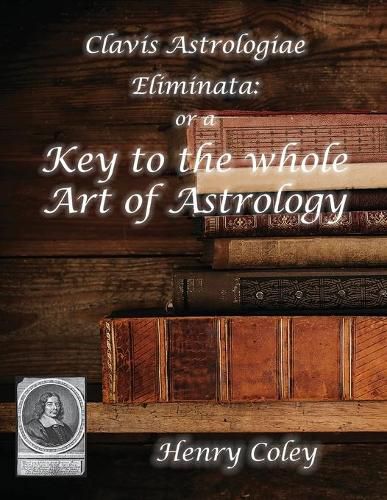Readings Newsletter
Become a Readings Member to make your shopping experience even easier.
Sign in or sign up for free!
You’re not far away from qualifying for FREE standard shipping within Australia
You’ve qualified for FREE standard shipping within Australia
The cart is loading…






This title is printed to order. This book may have been self-published. If so, we cannot guarantee the quality of the content. In the main most books will have gone through the editing process however some may not. We therefore suggest that you be aware of this before ordering this book. If in doubt check either the author or publisher’s details as we are unable to accept any returns unless they are faulty. Please contact us if you have any questions.
Henry Coley was an English mathematician and astrologer who was born October 28, 1633 at 2:15 p.m. in Oxford. He died in 1707. Married first in 1655, and again in 1660, he had a child by each wife. Coley taught mathematics, astronomy, navigation, the use of globes, surveying, and other allied arts, in addition to astrology, and his astrological textbook was first published in 1669, followed three years later by the first number of his almanac. William Lilly, a popular astrologer of the time, thought highly of him both as a person and an astrologer.
Coley’s textbook was reissued in an enlarged edition in 1676. Later, it was reprinted serially by the American Federation of Astrologers, and again in this volume, as part of the American Federation of Astrologer’s commitment to making older astrological texts available to students and astrologers.
Clavis Astrologia Eliiminata or a Key to the Whole Art of Astrology contains three parts: an introduction to astrology; horary astrology with the diagnostics of Hermes on the decumbiture of the sick and English translations of the Centiloquies of Ptolemy, Hermes, and Bethem; and nativities, with complete mathematical instructions and numerous tables.
Seventeenth century students of astrology had few textbooks available to them. This volume, and several others of the time, are thus large (the original was more than 600 pages) and all-encompassing, covering nearly every facet of the subject and those techniques in common use at the time.
$9.00 standard shipping within Australia
FREE standard shipping within Australia for orders over $100.00
Express & International shipping calculated at checkout
This title is printed to order. This book may have been self-published. If so, we cannot guarantee the quality of the content. In the main most books will have gone through the editing process however some may not. We therefore suggest that you be aware of this before ordering this book. If in doubt check either the author or publisher’s details as we are unable to accept any returns unless they are faulty. Please contact us if you have any questions.
Henry Coley was an English mathematician and astrologer who was born October 28, 1633 at 2:15 p.m. in Oxford. He died in 1707. Married first in 1655, and again in 1660, he had a child by each wife. Coley taught mathematics, astronomy, navigation, the use of globes, surveying, and other allied arts, in addition to astrology, and his astrological textbook was first published in 1669, followed three years later by the first number of his almanac. William Lilly, a popular astrologer of the time, thought highly of him both as a person and an astrologer.
Coley’s textbook was reissued in an enlarged edition in 1676. Later, it was reprinted serially by the American Federation of Astrologers, and again in this volume, as part of the American Federation of Astrologer’s commitment to making older astrological texts available to students and astrologers.
Clavis Astrologia Eliiminata or a Key to the Whole Art of Astrology contains three parts: an introduction to astrology; horary astrology with the diagnostics of Hermes on the decumbiture of the sick and English translations of the Centiloquies of Ptolemy, Hermes, and Bethem; and nativities, with complete mathematical instructions and numerous tables.
Seventeenth century students of astrology had few textbooks available to them. This volume, and several others of the time, are thus large (the original was more than 600 pages) and all-encompassing, covering nearly every facet of the subject and those techniques in common use at the time.